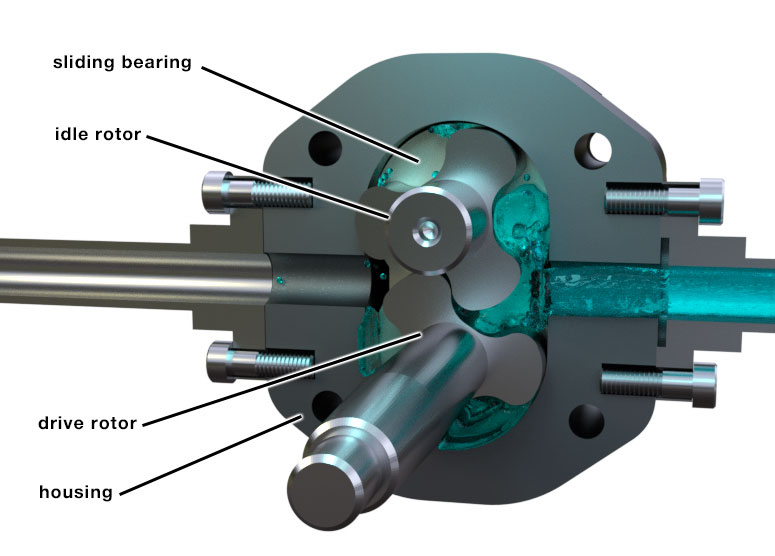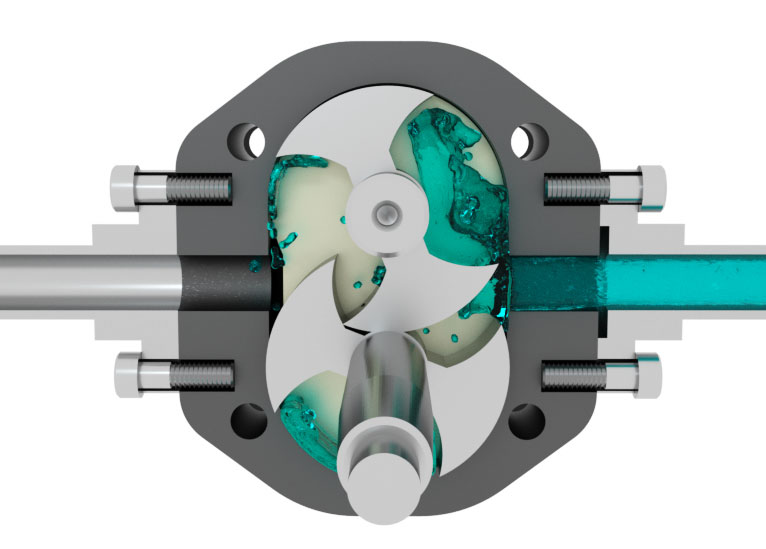Lobe pumps
The pumping of liquids in rotary lobe pumps is based on the rotation of rotors of a special shape, which provides a hermetic separation of the suction and discharge cavities. The working principle of lobe pumps is similar to that of gear pumps, but there is one important difference. In a gear pump, the drive gear transfers rotation to the driven gear. You just need to connect the drive gear to the motor and both gears will rotate.
Lobe pumps design
The special shape of the rotors used in lobe pumps allows the formation of a large space for pumping liquids, but this shape does not allow the transfer of rotation from the male rotor to the female one. Therefore, lobe pumps use an additional gear train which is located outside the working chamber of the pump. This complicates the design, but with the same dimensions, lobe pumps can provide greater flow than gear pumps.

How do rotary lobe pumps work?
The drive and idle rotors are installed in the pump housing.
The rotors can rotate on rolling or sliding bearings as shown in our example. Gears are fixed on the rotor shafts. They are used to transmit rotation from the drive rotor to the idle one. The back and front covers form the pump chamber. A pump cup is installed in the front cover to ensure a hermetically sealed shaft.
As the rotors rotate, the volume of the chamber on the right will increase and the liquid from the suction channel will fill the vacated volume. As the rotors turn, the liquid in the trapped volume will be transferred from the suction area to the discharge area, and the volume of the chamber on the left will decrease. Due to the rotor engagement, the liquid will be forced into the pressure line.
The shape of the rotors can vary. The main condition for operation is the form-fit of the rotors between themselves and the housing. When pumping a viscous liquid, minimum clearances between the rotors are permissible. This may significantly increase the resource of the pumps. However, to ensure high efficiency, these clearances must be microscopic, which means that the rotors must be made with high precision.

Lobe pumps are suitable for pumping gases and liquids, including highly viscous ones.
They are used as air compressors in driving superchargers of supercharging systems of four-stroke engines. We talked about supercharging in one of our videos. When pumping gases, additional plates can be placed in the rotors to ensure tightness.
Lobe pumps are often used in the food industry for pumping syrups, fruit purees, molasses, condensed milk, and even cottage cheese. Only pumps made of special stainless steel and other safe materials are suitable for handling food.